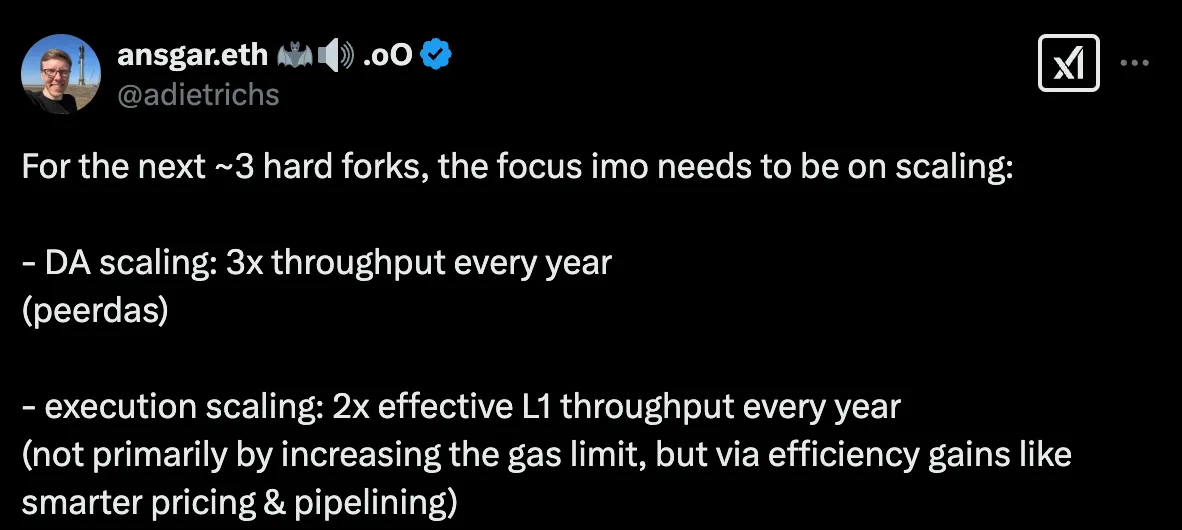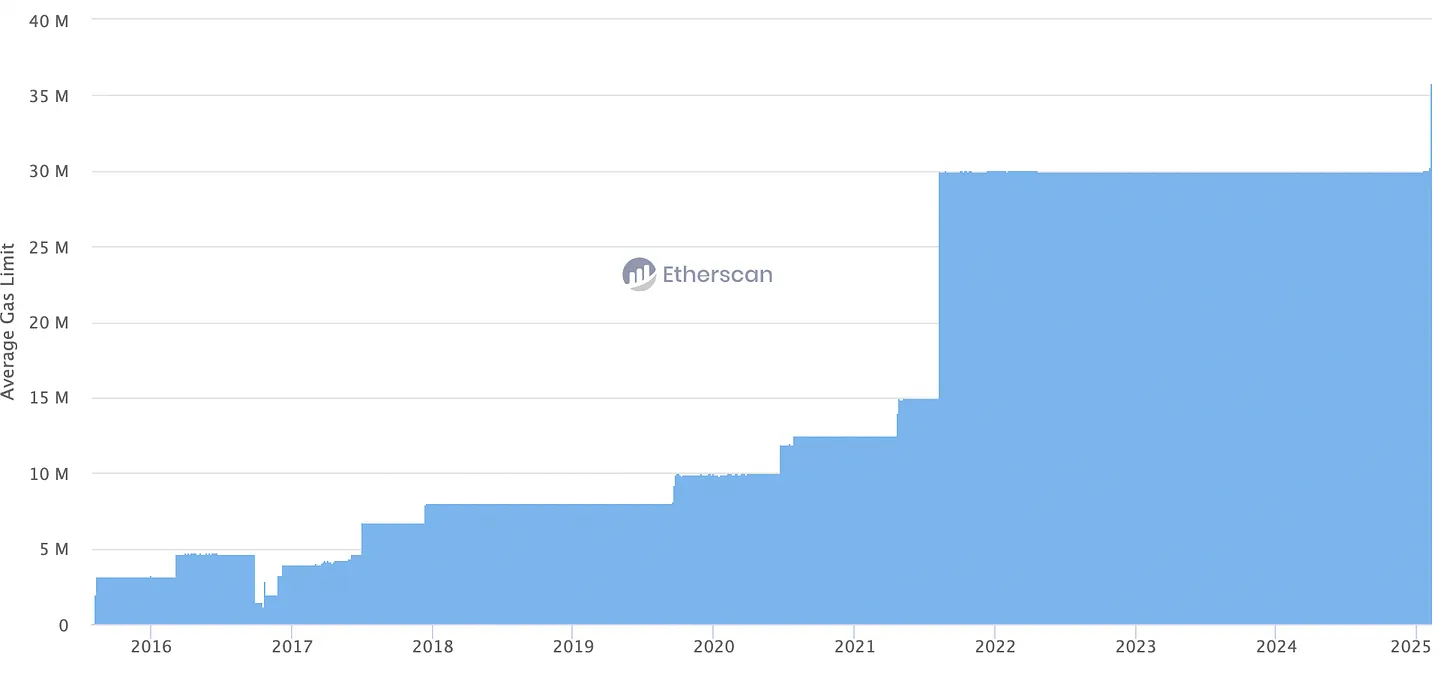Ethereum has grown from a simple smart contract platform to a global settlement layer for decentralized applications, finance, and beyond. However, as the network continues to expand, it faces a critical challenge: scaling its capacity to meet growing demand. While Layer 2 solutions like rollups have alleviated some of these pressures, the base layer of Ethereum must also evolve to support this growth.
In the past few months, there has been a growing sentiment that Ethereum is stagnating—especially when it comes to scaling its resources. Competitors are aggressively optimizing their networks, and users and L2s are increasingly demanding higher DA and blockspace.
The Problem: Endless Debates and No Action
Today, discussions about increasing Ethereum’s network capacity—whether it’s the gas limit (block space) or the blob count (introduced by EIP-4844 for rollup data availability)—often go in circles. The community and developers debates arbitrary numbers, argues about risks, and ultimately fails to commit to a clear plan. This leads to:
- Stagnation: While competitors aggressively optimize their networks, Ethereum risks falling behind due to indecision.
- Uncertainty for Developers: Without a predictable roadmap, developers and businesses building on Ethereum cannot confidently plan for the future.
- Missed Opportunities: A lack of structured scaling stifles innovation and limits Ethereum’s potential to support new use cases.
The solution? Stop yapping and start acting. Ethereum needs a programmatic approach to increasing its network capacity—one that is gradual, predictable, and aligned with the network’s long-term goals.
What Does “Programmatic Increase” Mean?
A programmatic increase means setting a predefined, incremental schedule for scaling network capacity over time. This could apply to:
- Block Space (Gas Limit): Increasing the gas limit gradually to allow more transactions per block.
- Blob Count: Scaling the number of blobs available per block to support rollups and improve data availability.
- Other Resources: Potentially extending this approach to other network resources in the future.
The key idea is to remove guesswork, eliminate endless debates, and create a clear, sustainable path for growth.
Why Programmatic Scaling?
1. Stop Yapping, Start Scaling

The Ethereum community spends too much time debating arbitrary targets and hypothetical risks. A programmatic approach cuts through the noise by committing to a concrete plan. Instead of arguing about what the gas limit or blob count should be in 1-2 years, we can focus on executing a clear roadmap. (this is not a diss to the poster of the tweet above, it is just an example).
2. Gradual and Sustainable Growth
Sudden, large increases in capacity can strain the network, leading to issues like longer block propagation times or increased hardware requirements for validators. A gradual, programmatic approach allows the network to scale incrementally while monitoring the impact of each increase. This ensures that Ethereum remains decentralized, secure, and accessible.

The chart above should look more gentle rather than being aggressive bumps.
How Can This Be Implemented?
The concept of programmatic scaling can be applied to various aspects of Ethereum’s network capacity. Here are two key examples:
1. Gas Limit (Block Space)
A proposal like EIP-7783 could establish a schedule for gradually increasing the gas limit over time. For example, the gas limit could increase by 1% every month, allowing the network to scale smoothly while monitoring the impact on block propagation and hardware requirements.
2. Blob Count (Data Availability)
A similar approach could be taken for blobs. A predefined schedule could increase the number of blobs per block over time, ensuring that rollups have the data availability they need to scale. This would complement Ethereum’s rollup-centric roadmap and support the growing demand for Layer 2 solutions.
The Road Ahead
Programmatically increasing Ethereum’s network capacity is not just about raising limits—it’s about committing to a plan and accelerating Ethereum’s growth. By adopting a structured, incremental approach, Ethereum can:
- Scale sustainably: Ensure the network can handle growing demand without compromising decentralization or security.
- Support rollups: Provide the resources needed for Layer 2 solutions to thrive.
- Foster innovation: Enable developers to build the next generation of decentralized applications.
Additionally, it provides a direct plan for the future, instead of forcing developers and users to get lost in endless debates with each other.

